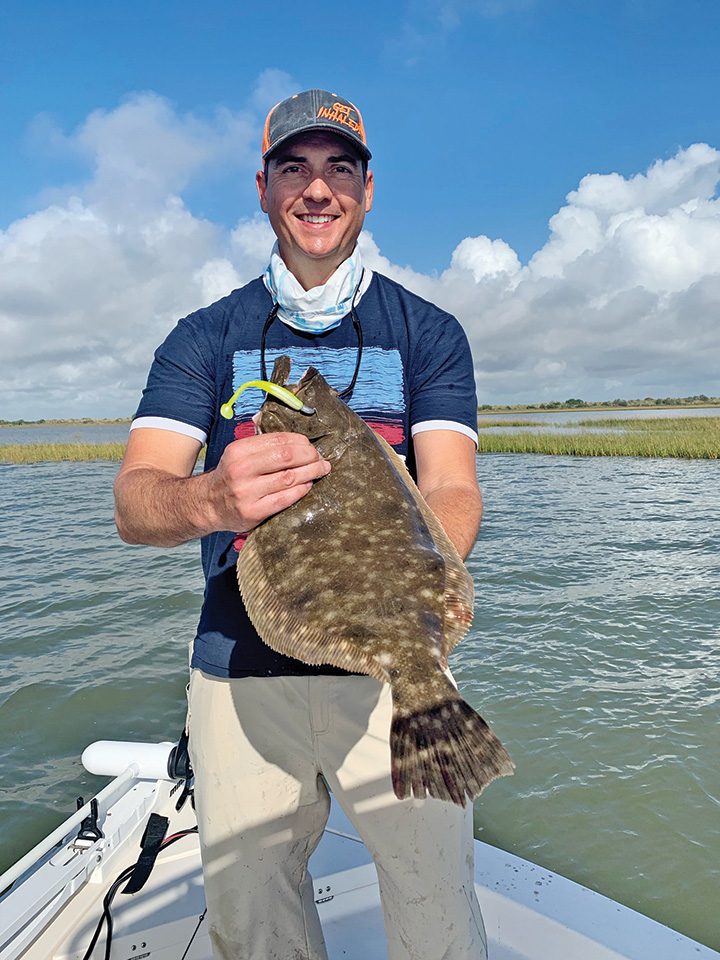By Capt. Michael Okruhlik
Do all flounder migrate offshore during the winter? I can’t be certain, but I have caught them in every month of the year. Those late-winter catches may have been flounder that never left, or they might be some that returned early. But one thing is for sure, during cold weather is when I have caught my largest flounder.
Let it be known that I am a lure fisherman at heart, but if you want to consistently target the largest flounder this time of year, live and dead bait rule supreme. A large mullet or shad in the 6-inch range is ideal. Any type of fishfinder rig will suffice with the appropriate weight for the depth of water and strength of current you are fishing. You just need enough weight to keep your bait in contact with the bottom, where flounder live.
The method I use for flounder catching is to keep the bait in constant contact with the bottom. Pointing the rod tip toward the water and utilizing a sweeping motion, I twitch my rod, kicking up mud and sand to create a trail of dust that attracts fish. This way I can cover some water in search of a hungry doormat Once I feel the first tap from the flounder, I pause. I wait patiently for the second and usually a quick third tap. Then I give it a solid hook-set!
Flounder will hold onto a bait longer than most inshore species, and they don’t always engulf it all at once. I feel they want to injure their meal before swallowing it, which is why it pays to be patient and wait until they’ve got the hook in their mouth before driving the point home.
The best area to target the largest of the species is near structure, specifically bulkheads. Flounder like to bed down next to seawalls, where baitfish have fewer angles of escape. Other structure like rock jetties are also great areas to try.
On an outgoing tide, I target drain openings where high tide flows out of the marshes. These drains can be small, 1 to 2 feet of width is all it takes. As long as the marsh behind the drain has enough water to hold bait, it’s perfect. Flounder will stage at the opening of a large drain as well, but no drain is too small, and I feel the smaller ones can easily be dismissed and easily missed.
One final note is on tide direction and strength. During a strong outgoing tide, flounder use the tide as easy transportation to open water and focus more on swimming than feeding. I tend to avoid the strong outgoing tide when targeting migrating flounder.
Be safe, stay warm, and get out there to catch the largest flounder of your life.
Capt. Michael Okruhlik is the inventor of
Knockin Tail Lures, Controlled Descent Lures, and the owner of www.MyCoastOutdoors.com.
